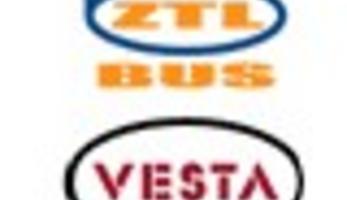Introducing city-centre access management
Thematic areas
Demand & urban space management
- Access restrictions and management
- Parking management and pricing
Summary
A differentiated tariff scheme for the limited access zone in Venice was designed in order to provide incentives for tourist coaches complying with the Euro IV exhaust emissions standard.
Implementing sustainable mobility
Since the 1980s, Venice has faced serious problems as a result of the huge volume of tourists visiting the city each year, which is estimated to exceed 18 million. Approximately 3 million are day visitors, who travel to the city by coach. Since 2002, access by tourist buses has been controlled by the creation of a limited traffic zone (LTZ), for which a permit is required.
Before the beginning of MOBILIS, more than 62,000 coaches arrived in Venice each year from various countries, and the number peaked in 2006 to reach more than 75,000. VESTA S.p.A managed coach access to the LTZ through three check-points.
The main objectives of the measure were to encourage the use of cleaner coaches in Venice through the design and implementation of differentiated access tariffs; and to promote the use of coaches complying with the Euro IV exhaust emissions standard.
Progress
As a first step, VESTA S.p.A. undertook a study to identify the access pass rate for coaches in Venice and to define the economic benefits of Euro IV buses. A working group was set up for the coordination and improvement of the tourist pass system.
The City of Venice approved the new tariff system in December 2006, and in March 2007, competence for LTZ bus management was transferred from VESTA to the mobility service agency ASM. The new tariffs were introduced in the first quarter of 2007 at the bus check-points of the LTZ. Within the differentiated tariffs, the reduction rate for Euro IV buses ranges from 9 to 33 percent, depending on the category of bus and the period.
A communication campaign took place in Venice schools to raise awareness among young people of environmental issues and sustainable mobility.
Check-point personnel were trained in the correct recognition of Euro IV–compliant coaches.
Outcomes
The proportion of coaches compliant with Euro IV exhaust emissions standards entering Venice rose from less than 0.5 percent at the beginning of the project to 5.4 percent in June 2008. The introduction of the new tariffs provided incentives for the substitution of old, highly polluting coaches with Euro IV coaches with a lower environmental impact. The results exceeded expectations, although no quantitative evaluation of the impact on pollutant emissions was possible during the project period. However, as the advantages of the scheme did not come to an end once the MOBILIS project was over, environmental benefits are likely to increase due to the combination of the tariff scheme and the regular renewal of tourist coach fleets.
Press releases produced for the Italian and foreign press, articles published on four websites, and a mail campaign involving 3,991 Italian primary and secondary schools stressed the economic and environmental advantages of less-polluting buses.
There was some difficulty in establishing the tariff rates: the tariff increases and discounted rates for hotel buses were the subject of stakeholder opposition.







